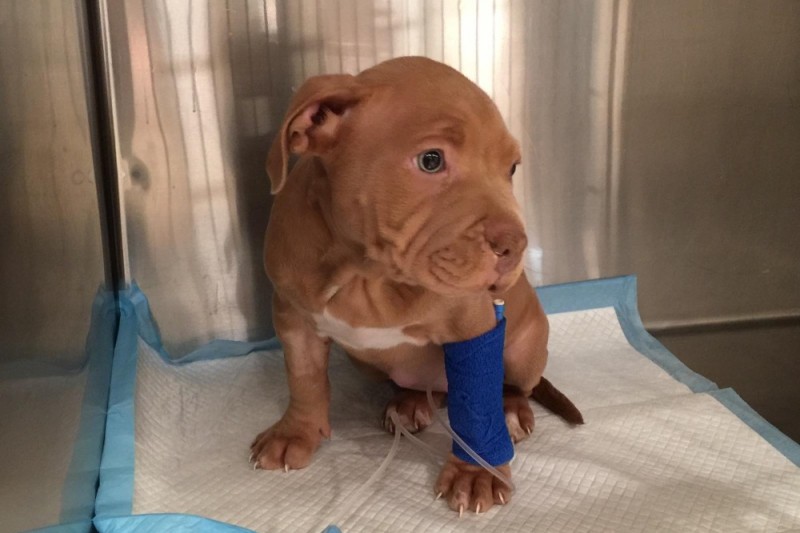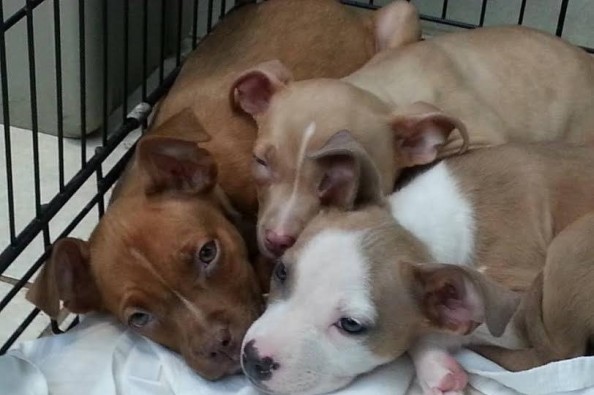Module 2: The Case of the Sick Puppies
What to Do?
Fortunately, this is a shelter with adequate medical resources to treat parvoviral dogs. The shelter has an Isolation Unit, a full-time veterinarian to oversee all medical care, well-trained medical staff, and written protocols for treatment of common diseases in shelters. The shelter budget has allocated sufficient funding to support medical care of most common illnesses.
The shelter vet reviews the shelter’s Canine Parvovirus Treatment protocol. She starts the infected sick puppy on intravenous fluids for dehydration, an injection to control nausea/vomiting, an antibiotic injection for secondary bacterial infection in the bloodstream (sepsis), and pain medication for the abdominal pain. She instructs the tech to move the puppy into a cage in the Isolation Unit.
The shelter vet also reminds the medical staff to review the shelter’s Isolation Unit Biosecurity Practices protocol to ensure they follow the PPE (protective personal equipment) requirements and use the correct disinfectant to kill parvovirus on surfaces.

What About the Littermates?
What should be done with the other 3 puppies exposed to their littermate with parvovirus? Could they also be infected but appear healthy because they are in the pre-clinical incubation period?

Test Your Knowledge

